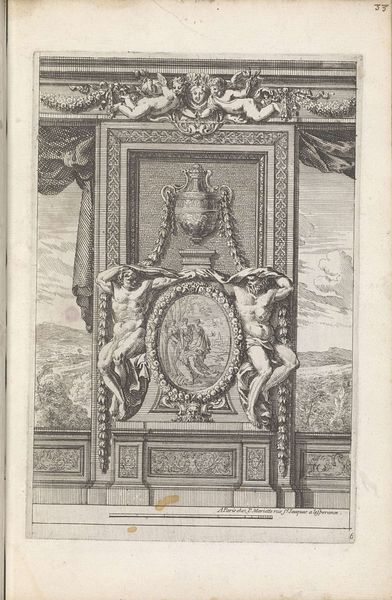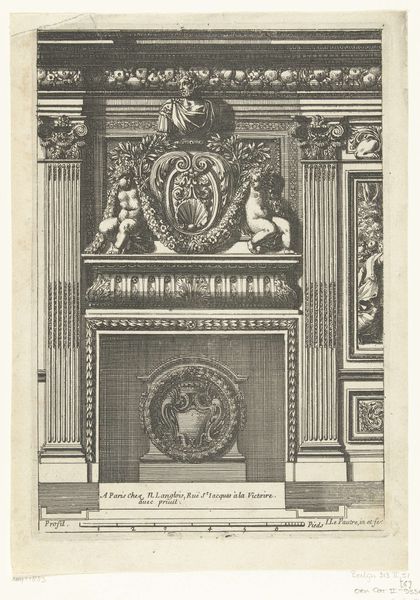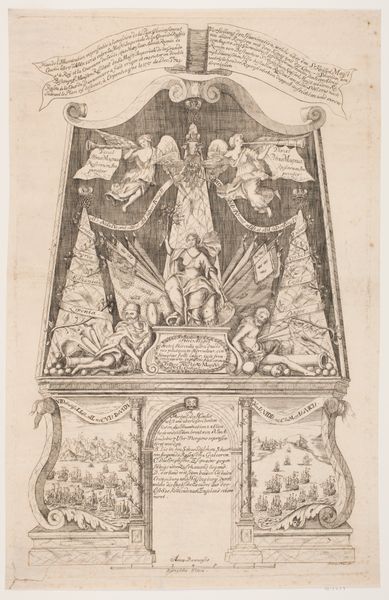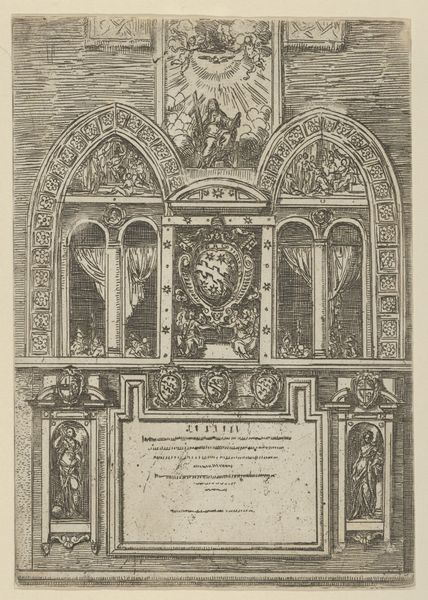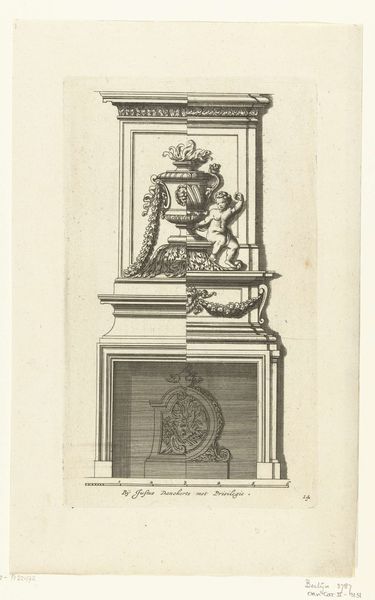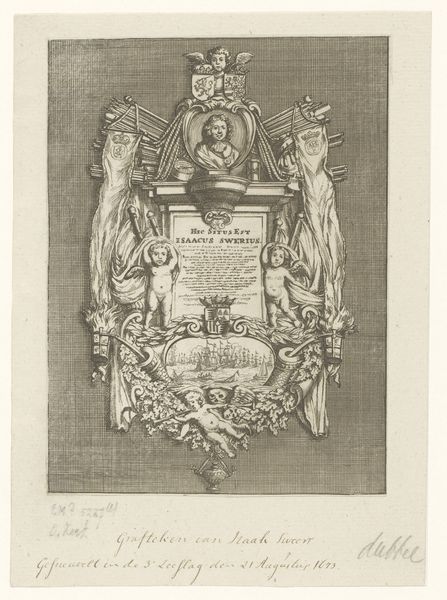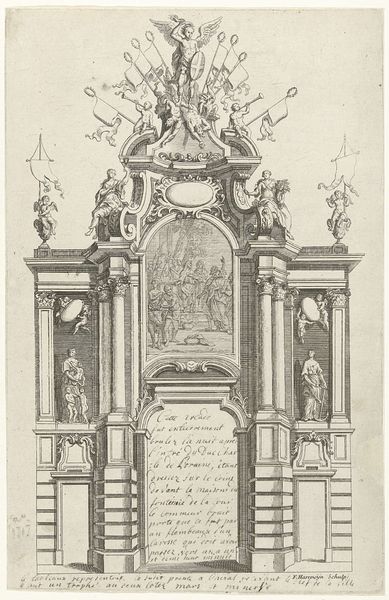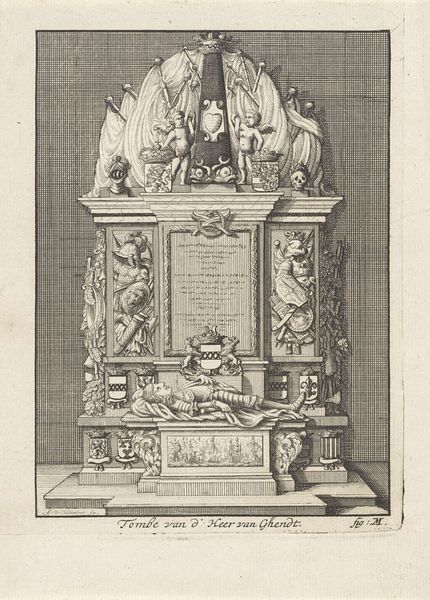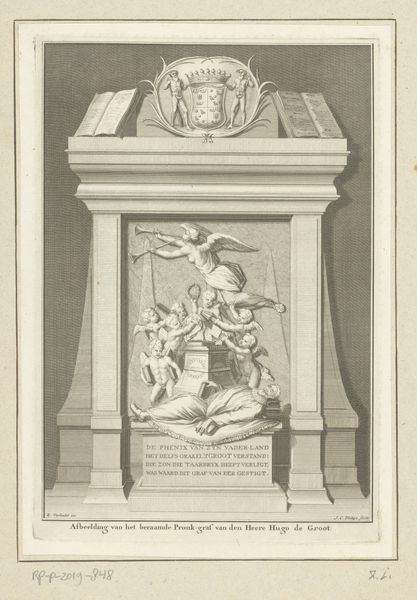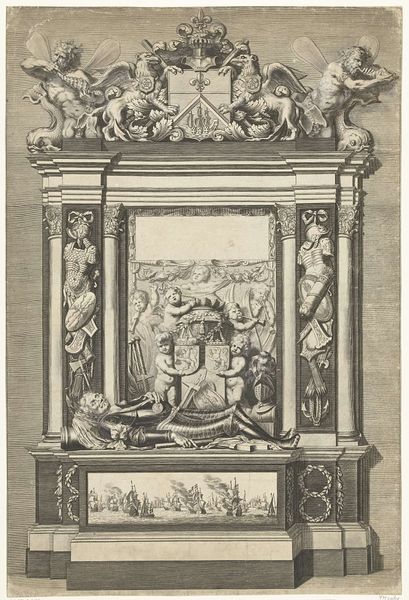
Dimensions: height 280 mm, width 185 mm
Copyright: Rijks Museum: Open Domain
Curator: This metal engraving, crafted before 1800, presents a Grafmonument van Baron van Coehorn in nis, currently housed in the Rijksmuseum. Editor: Immediately, the detail overwhelms me. The layering of symbols on top of symbols – it feels dense and weighty, in both material presence and symbolic load. What can you tell me about its origins? Curator: Well, these baroque flourishes speak to the visual language used to publicly express status, grief, and power. Van Coehoorn was a celebrated military engineer. Commemorations like these often intertwined personal grief with national narratives of heroism, and, of course, political power. The deceased is literally placed on a pedestal to continue the legacy of state power. Editor: The iconography is incredibly rich, isn't it? The helmet, the crest, the draped flags...they’re potent markers of martial prowess and aristocratic identity. The skull feels quite conventional but serves as a powerful reminder of mortality juxtaposed with earthly achievements. Curator: It is fascinating to consider what public identity in the late 18th Century meant. What societal values were prioritized, how power was visually codified and projected. Even death became another spectacle in a tightly controlled performance of societal norms. This is evident in how much of society could read symbols. Editor: Absolutely. The symbolic weight must have been profound for viewers of the time. Consider how images operate as mnemonic devices, solidifying historical memory and constructing enduring cultural narratives. These visual cues would speak volumes, reinforcing the baron’s status and perpetuating a particular understanding of national history. I wonder, who had access to an artwork like this? Curator: Likely members of the elite classes who would understand both the artistic context, appreciate the skill involved, and identify with the aristocratic symbols on display. This would become a matter of solidifying their own societal status. Editor: So the image acts as a sort of visual anchor, ensuring that Coehoorn, his accomplishments, and the values he represented remain fixed in the collective memory. Thanks for those reflections. Curator: Likewise, exploring these historical commemorations encourages us to reconsider what contemporary methods we use today in terms of statues, and street names and place.
Comments
No comments
Be the first to comment and join the conversation on the ultimate creative platform.
